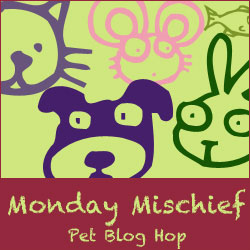Agility Part V
"Poisoned Words"
In Case You Missed It!
Agility Part I - Tunnels & Circles
Agility Part II - Patience
Agility Part III - Practice at Home
Agility Part IV - Terminology
Agility Part VI - Training Fun & A Video for You!
When we first adopted Ziva we knew that her lack of confidence would be a work in progress but it was something we were willing to work with. It's amazing how positive training techniques, shaping behaviors, learning new things, and agility have all improved her overall demeanor and confidence in the world around her.
More on our Confidence Building with Ziva Here:
The Value of High Value Treats
Adopting Ziva
Ziva used to be VERY jumpy when it came to loud noises, even small ones though could startle her - something as simple as me snapping the wrinkles out of a shirt while doing laundry would make her flinch and hide.
One thing we noticed but never really thought about is what our instructor called "Poisoned Words".
Last week in agility we were introduced to the table platform, the idea is that once on the table your dog should stay there until released - usually in a down or sit position.
First she had us show off our "sits" and "downs" in the arena but not on the table. Something Ziva has always done for her "sits" and "downs" is lower herself super, duper, crazy, molasses like slow speed into position. Dante on the other hand will move as quickly as possible into position because he really loves getting treats or his toy for doing so.
As for Ziva, we've tried getting her to move faster but nothing has worked and we kinda thought it would work itself out with time and repetitions.
Nope. Our instructor pointed out the one thing we were missing, the missing link in the chain that we didn't see.
Every time I said, "sit" Ziva was very minutely flinch in her eyes, her ears would go back slightly, and then she would begin her extremely loooooooong downward descent. Same thing happened for down. She was showing signs of stress.
We then had some practice time on the table, Ziva didn't mind at all being up on the table but still her speed for her "sits" and "downs" was less than desirable and she continued to show stress.
Ever heard of a poisoned word?
 |
| No signs of stress here! |
A poisoned word is when aversive training methods are used to teach a dog, sometimes people call these methods traditional and thankfully the dog training world is moving further away from these techniques.
Aversive based training (Negative Reinforcement & Positive Punishment) has been proven time and again to not be as effective for dog training. Pennsylvania University Study Regarding Dog Aggression and Training Correlations.
Yes you can accomplish the same resulting behavior but typically at a cost to your relationship, the fact of the matter is that their are better ways to train your dog that don't involve force AND only contribute to strengthening your relationship.

Sadly most likely someone taught Ziva to sit using aversive methods, she now hears those words and does not want to sit because it is associated with something negative in her head. Our instructor informed us we needed new words.
We decided to go with French!
Our new words are:
Assis (ah-see) - Sit
Coucher (coo-shay) - Down
And after just a couple days of practice you would not believe the difference it has made! We've probably cut the time in half that it used to take her to "sit" or lay "down".
I should mention, a long time ago (not with Ziva) we used a combination of positive punishment based and positive reinforcement based training. Through lots of research we quickly learned we were doing it wrong and more could be accomplished through positive reinforcement and negative punishment techniques. Their is no way Ziva and I could train agility if we were using positive punishment training at home, she wouldn't trust me as much and she certainly wouldn't want to work for me.
Sadly many bully breed owners especially - use aversive training methods (R-, & P+) use of these methods usually involves relying heavily on a tool for a behavior or making "corrections" such as a:
Sharp jerk on a collar/leash set.
Pressure induced through the use of a chain ("choke") collars, pinch collars, and electric shock collars in order to "train" or condition the dog to behave in a certain way.
Often times these methods don't work, or they only work so long as you have your tool. I call this lazy training, you're relying on a tool rather than your relationship and you're lacking in maybe time and patience (maybe both) to properly train your dog.
 |
| Oh look, a child can walk my 75 pound bully. NO aversive tools. |
One big excuse I run into with bully owners is that bully breeds are a "hard" breed that needs a more forceful hand, this is so untrue. Bully breeds are yes maybe a bit more stubborn and hard to train than lets say a Labrador Retriever but their is no reason to think that you must use force.
As dog owners even trainers you should be constantly looking for ways to improve as a trainer, everyone makes mistakes, but a good trainer learns from their mistakes and continues to grow and learn. Knowledge is power, and the more you know the better your relationship with your dog will be and the less you'll feel the need to force your will upon a dog in order to "train".
"To assume that one has achieved total perfection in communicating with a completely different species is the height of arrogance. In other words, get over yourself. Source here."
"Positive Reinforcement and Clicker Training has produced highly-motivated, high-performance dogs that have achieved the highest awards in dog activities of all kinds. Source here"
More Resources - if you click on our category topic "Training" you will find more resources, including how to shape/train specific behaviors.
Positive Training, Fear/Stress Signals in Dogs.
Signs of Stress in Dogs
Training Methods
Positive Dog Training
The Value of High Value Treats
Myths About Positive Reinforcement and Clicker Training
Coercion and Compulsion in Dog Training




































